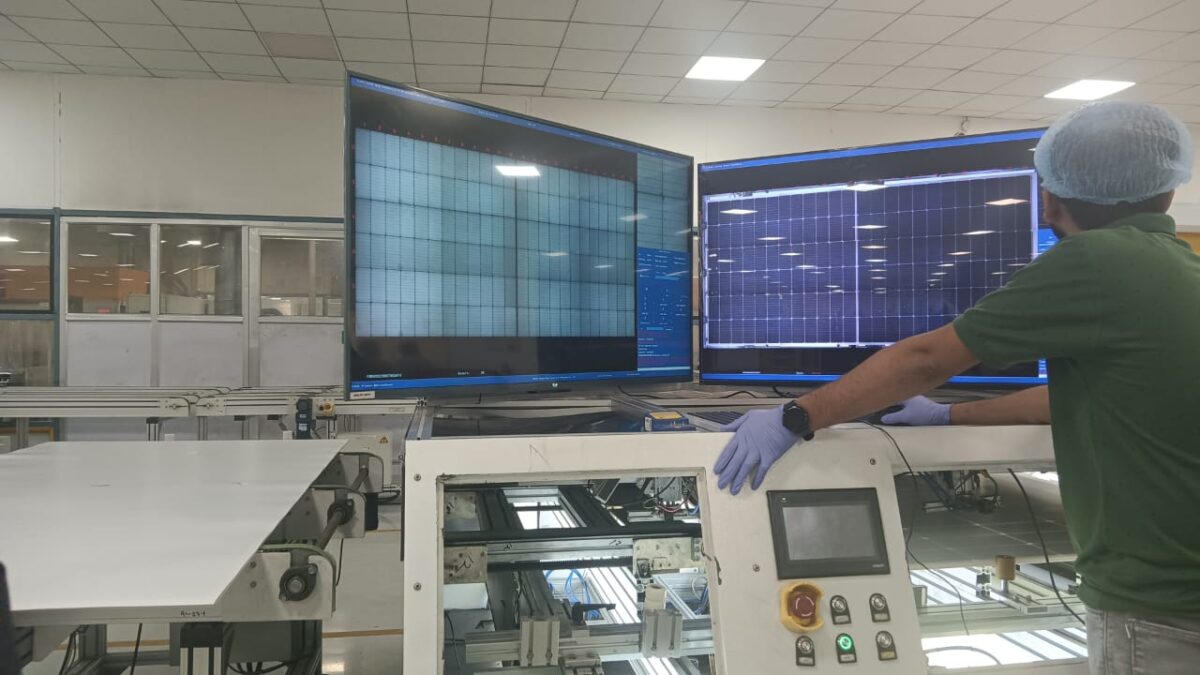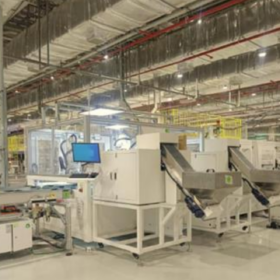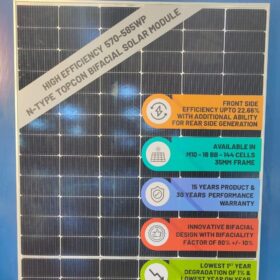India added 20.8 GW of solar modules and 3.2 GW of solar cell production capacity in calendar year (CY) 2023, according to Mercom India’s latest report, State of Solar PV Manufacturing in India 2024.
The report stated that PV manufacturing capacity additions in 2023 were primarily driven by the anticipated reimposition of the Approved List of Models and Manufacturers (ALMM) order starting in April 2024, as well as potential export opportunities.
India’s cumulative solar module manufacturing capacity reached 64.5 GW and solar cell capacity 5.8 GW as of Dec. 2023. Gujarat accounted for 46.1% of the country’s cumulative PV module manufacturing capacity, while Telangana accounted for 39% of the solar cell production capacity.
Monocrystalline modules accounted for 67.5% of the country’s module production capacity, followed by polycrystalline, tunnel oxide passivated contact (TOPCon), and thin film modules.
About 60% of the installed module manufacturing capacity was equipped to manufacture solar modules in M10 and G12 wafer sizes. Only 22.2 GW of the total module production capacity was enlisted under the ALMM order per the updated List–I issued by MNRE as of January 2024.
India imported 16.2 GW of modules in 2023, 158% up from 10.3 GW in 2022. Domestic manufacturers exported 4.8 GW of solar modules in 2023, 204% up compared to 1.6 GW in 2022. India’s solar cell imports in 2023 stood at 15.6 GW, 169% up year-on-year. Solar cell exports reached 286.3 MW in 2023, up 2,765% from 10 MW in 2022.
Outlook
The report projects that India’s PV module manufacturing capacity will surpass 150 GW and cell capacity will reach over 75 GW by 2026.
Based on the current pipeline, monocrystalline modules are anticipated to represent 59.7% of the annual module production capacity and 50.5% of the cell production capacity by 2026, followed by TOPCon, Heterojunction (HJT), and other technologies.
“As Indian manufacturers continue to invest in expanding their solar panel production capacities, they need to carefully navigate through the complexities of geopolitical tensions and trade disputes. Cheaper Chinese products will continue to challenge the competitiveness of locally-produced modules. A policy change in the U.S., post-elections, could potentially shrink export opportunities, and demand for solar energy in India needs to ramp up significantly to consume the projected increase in module production in the coming three years,’ said Raj Prabhu, CEO of Mercom Capital Group.
This content is protected by copyright and may not be reused. If you want to cooperate with us and would like to reuse some of our content, please contact: editors@pv-magazine.com.









By submitting this form you agree to pv magazine using your data for the purposes of publishing your comment.
Your personal data will only be disclosed or otherwise transmitted to third parties for the purposes of spam filtering or if this is necessary for technical maintenance of the website. Any other transfer to third parties will not take place unless this is justified on the basis of applicable data protection regulations or if pv magazine is legally obliged to do so.
You may revoke this consent at any time with effect for the future, in which case your personal data will be deleted immediately. Otherwise, your data will be deleted if pv magazine has processed your request or the purpose of data storage is fulfilled.
Further information on data privacy can be found in our Data Protection Policy.